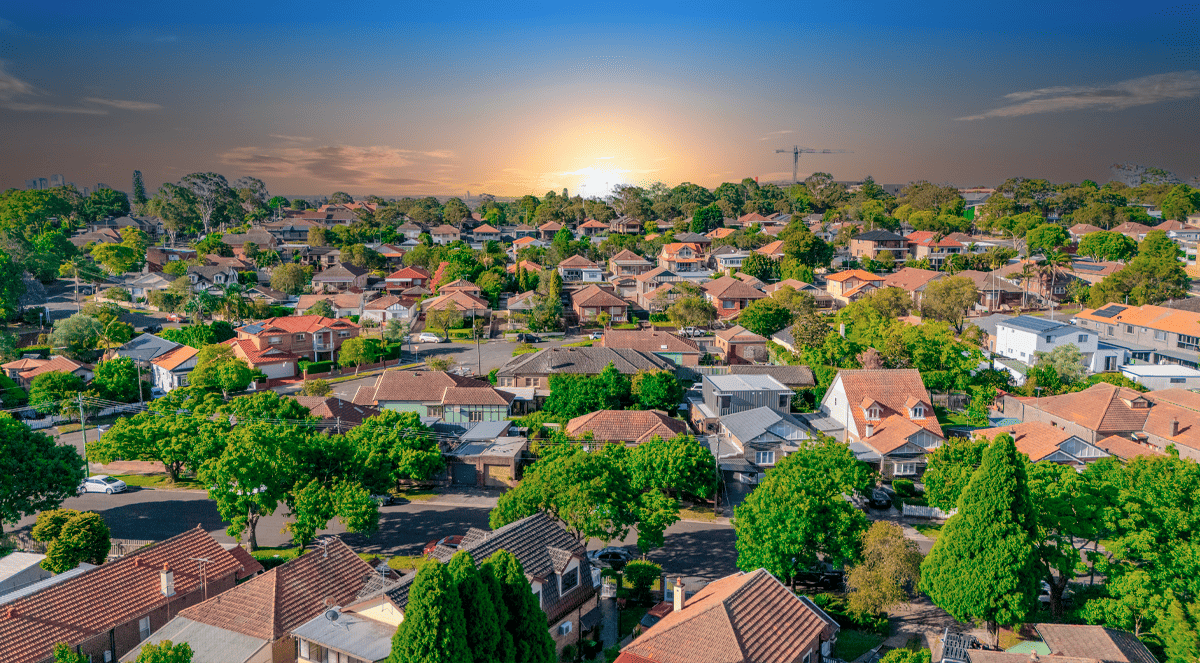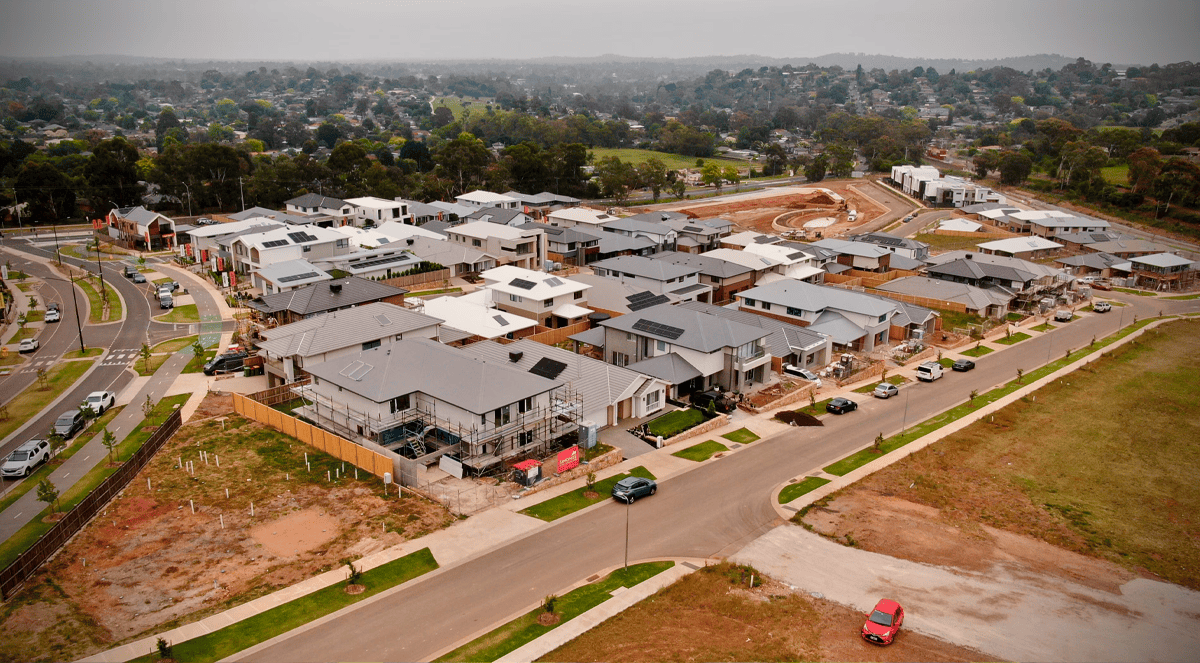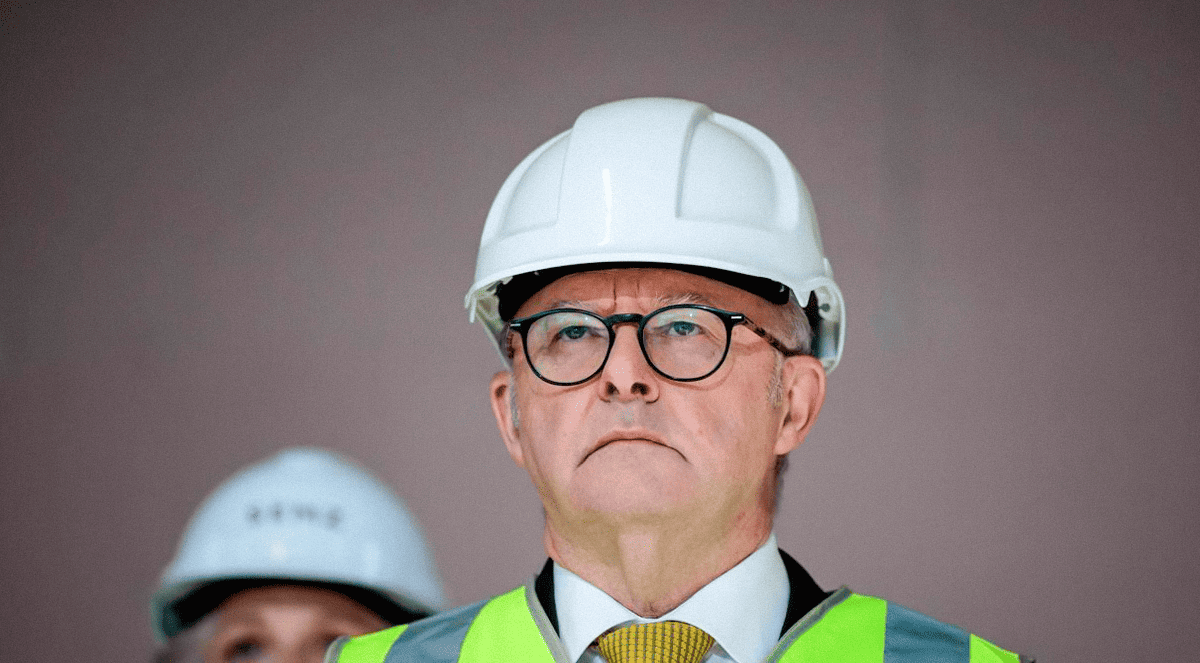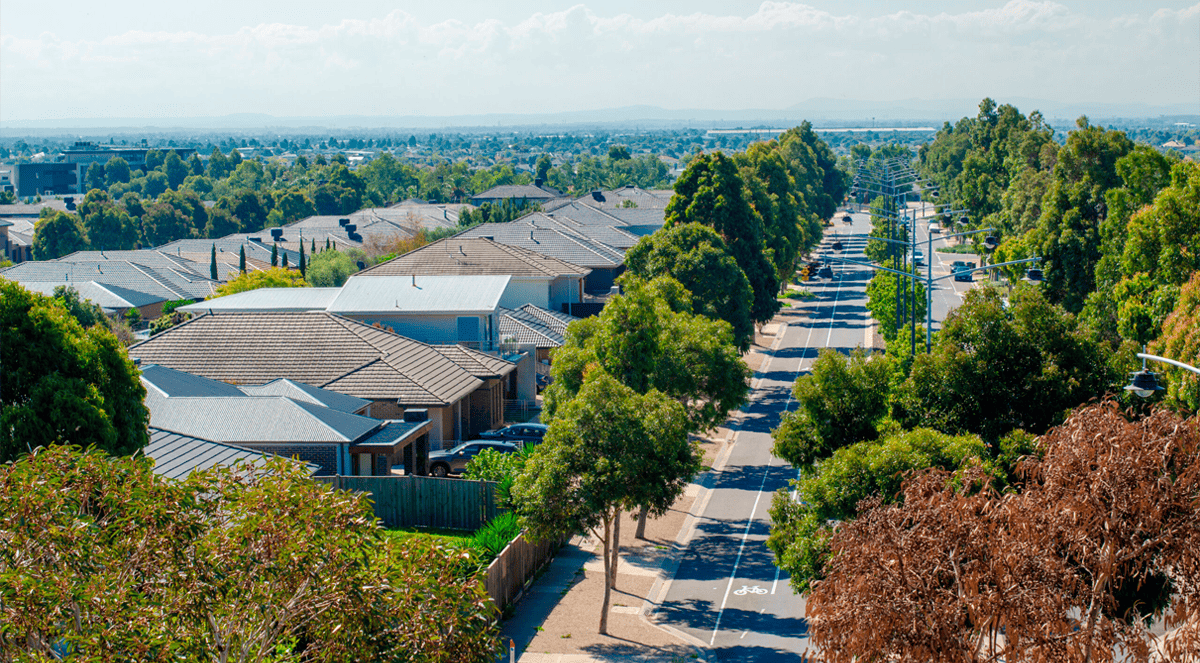Features > Property News & Insights > Market updates
More interest rate cuts coming, but not in April
.png)
Image by Trevor Collens/Brisbane Times
KEY POINTS
- Australia's annual inflation rate slowed to 2.4% in February 2025, with falling electricity prices helping keep costs down
- The Reserve Bank of Australia’s preferred measure, trimmed mean inflation, also dropped slightly to 2.7%, remaining within the central bank’s 2-3% target range
- Despite inflation seemingly being back under control, former RBA official Luci Ellis believes the central bank will not cut rates in April to protect its credibility
Data from Australia’s official statistician shows inflation continues to moderate in Australia, confirming the case for the Reserve Bank of Australia to keep cutting interest rates.
However, a former RBA insider says Australians looking for more mortgage interest relief will have to wait until at least May, as cutting the cash rate at next week’s April board meeting would be “damaging” to the central bank’s credibility.
The details
The monthly Consumer Price Index indicator rose 2.4% in the 12 months to February 2025, a small fall from the 2.5% recorded in January and December, and slightly below most market expectations.
The Bureau of Statistics says the largest contributors to the annual CPI movement were in the Food and non-alcoholic beverages (+3.1%), Alcohol and tobacco (+6.7%), and Housing (+1.8%) categories.
Helping keep headline inflation down was another fall in electricity prices.
Power costs fell 2.5% in February 2025, due to the timing of federal government cost-of-living energy rebates in Victoria, Australia’s second-most populous state.
Housing
Housing costs make up a big portion of the basket of goods and services the ABS surveys each month to compile its CPI data.
Rents actually rose 0.5% just between January and February 2025, “driven by increases in both private rents and government rents”, according to the Bureau of Statistics.
However, over the 12 months to February, rent prices were up 5.5%, a moderation from 5.8% in the year to January.
“This was the softest annual growth in rental prices since March 2023, consistent with the increase in vacancy rates across most capital cities,” the Bureau says.
Nevertheless, rents remain high in historical terms.
The “New dwelling prices” category, which includes new home builds and major renovations, rose 1.6% in the 12 months to February.
This is actually the weakest annual rise since May 2021, which the ABS says can be explained by “project home builders offering incentives and promotional offers to entice business.”
Underlying Inflation
Importantly, the data from the Bureau of Statistics also shows underlying inflation, as measured by the “trimmed mean” indicator, fell in the year to February, easing 0.1% to 2.7%.
Again, this was slightly below market expectations.
This result is particularly important because of the implications for interest rates.
The Reserve Bank of Australia is mandated to keep inflation within a 2-3% target band, using the main tool it has at its disposal - raising or lowering the cash rate.
However, the central bank governor, Michele Bullock, has made it clear she and the RBA board are using the trimmed mean measure, not the headline CPI indicator, as their preferred yardstick of the pace of inflation in Australia.
Interest rate implications
In February, the RBA board cut interest rates by 0.25% - the first cut in more than 4 years.
Rates were raised quickly by the bank between May 2022 and November 2023 as the central bank attempted to stamp out an inflation breakout.
However, now that trimmed mean inflation - the bank’s preferred inflation measure - is well and truly back in the RBA’s own target band, shouldn’t the bank keep cutting rates?
Not so fast.
Until October 2023, Luci Ellis was an Assistant Governor at the Reserve Bank of Australia and was heavily involved in deciding monetary policy settings.
Ms Ellis is now the Chief Economist at Westpac.
In a recent briefing note, Luci Ellis said she was so confident that the RBA would not cut rates again at its April meeting that she will be travelling to London.
“We do not expect any surprises from the RBA this meeting that would require spending the early hours of the London morning trying to work out what is going on,” she quipped.
Ms Ellis says the February statement issued by the Reserve Bank board with its cash rate decision was “too hawkish in its rhetoric” to leave open the possibility of another rate cut at its next meeting on the 1st of April.
“Cutting again at the April meeting would therefore be damaging to its credibility.” Luci Ellis says.
However, she believes the central bank may consider another rate cut as early as May.
Financial markets currently rate the chances of a May interest rate cut at about 70%.
However, they have fully priced in one 0.25% cut by July and another in September.
After that, they appear to see no more cuts on the horizon until the middle of next year.
On that reckoning, by January next year, the cash rate could still be as high as 3.6%, which would mean retail mortgage rates of around 5-5.5%
The message to Australians waiting for substantially lower interest rates to purchase property is clear.
If you are expecting rates to fall significantly before you enter the property market, you are likely to be waiting a long time.
Stay Up to Date
with the Latest Australian Property News, Insights & Education.




.png?width=292&height=292&name=Copy%20Link%20(1).png)
 SIGN UP FOR FREE NEWSLETTER
SIGN UP FOR FREE NEWSLETTER





.jpg?width=1920&height=1080&name=Warning%2c%20You%20Might%20Be%20Facing%20Higher%20Taxes%20Soon%20(1).jpg)





.png?width=1920&height=1080&name=Rate%20Drops%20Signal%20BIGGEST%20Property%20Boom%20in%20DECADES%20(1).png)

.jpg?width=1920&height=1080&name=Labor%20vs%20Liberal%20These%20Housing%20Policies%20Could%20Change%20the%20Property%20Market%20Forever%20(1).jpg)
.jpg?width=1920&height=1080&name=QLD%20Slashes%20Stamp%20Duty%20Big%20News%20for%20Investors%20%26%20Home%20Buyers%20(1).jpg)
.jpg?width=1920&height=1080&name=Trump%20Just%20Slapped%20Tariffs%20%E2%80%93%20Here%E2%80%99s%20What%20It%20Means%20for%20Australia%20(1).jpg)
.jpg?width=1920&height=1080&name=Federal%20Budget%202025%20More%20Debt%2c%20No%20Housing%20%E2%80%93%20Here%E2%80%99s%20What%20You%20Need%20to%20Know%20(1).jpg)
.jpg?width=1920&height=1080&name=Australias%20Housing%20Crisis%20is%20about%20to%20get%20MUCH%20Worse%20(New%20Data%20Warns).jpg)
%20(1).jpg?width=1920&height=1080&name=Australias%20RENTAL%20CRISIS%20Hits%20ROCK%20BOTTOM!%20(2025%20Update)%20(1).jpg)
%20(1).png?width=1920&height=1080&name=Is%20Adelaide%20Still%20a%20Good%20Property%20Investment%20(2025%20UPDATE)%20(1).png)
.jpg?width=1920&height=1080&name=RBA%20Shocks%20with%20Rate%20Cuts!%20What%E2%80%99s%20Next%20for%20Property%20Investors%20(1).jpg)
%20(1).jpg?width=1920&height=1080&name=I%20Predict%20The%20Feb%20Rate%20Cut%20(My%20Price%20Growth%20Prediction)%20(1).jpg)
.png?width=1920&height=1080&name=Why%20Property%20Prices%20Will%20Rise%20in%202025%20Market%20Predictions%20(1).png)
.jpg?width=1920&height=1080&name=Why%20Investors%20Are%20Choosing%20Apartments%20Over%20Houses%202%20(1).jpg)
.jpg?width=1920&height=1080&name=Why%20Rate%20Cuts%20Will%20Trigger%20A%20Property%20Boom%20(1).jpg)
.jpg?width=1920&height=1080&name=Retire%20On%202Million%20With%20One%20Property%20(Using%20SMSF).jpg)
.jpg?width=1920&height=1080&name=4%20Reasons%20Why%20You%20Should%20Invest%20in%20Melbourne%20Now%20(1).jpg)
%20(1).jpg?width=1920&height=1080&name=Old%20Property%20vs%20New%20Property%20(Facts%20and%20Figures%20Revealed)%20(1).jpg)
%20(1).jpg?width=1920&height=1080&name=Will%20The%20New%20QLD%20Govt%20Create%20a%20Property%20Boom%20or%20Bust%20(My%20Prediction)%20(1).jpg)
%20Scott%20Kuru%20(1).jpg?width=1920&height=1080&name=Inflation%20Hits%20Three-Year%20Low%20(Will%20RBA%20Cut%20Rates%20Soon)%20Scott%20Kuru%20(1).jpg)
.jpg?width=1920&height=1080&name=How%20to%20Buy%20Investment%20Property%20Through%20SMSF_%20The%20Ultimate%20Guide%20(1).jpg)
.jpg?width=1920&height=1080&name=Victoria%20Slashes%20Stamp%20Duty%20Melbourne%20Set%20to%20Boom%20Scott%20Kuru%20(1).jpg)
.png?width=1571&height=861&name=Are%20Foreign%20Buyers%20Really%20Driving%20Up%20Australian%20Property%20Prices%20(1).png)
.jpg?width=1920&height=1080&name=The%20Single%20Factor%20That%20Predicts%20Property%20Growth%20Regions%20(1).jpg)
%20Scott%20Kuru%20(1).jpg?width=1920&height=1080&name=My%20Prediction%20On%20Rates%20%26%20Negative%20Gearing%20(Market%20Crash)%20Scott%20Kuru%20(1).jpg)

-1.png?width=1920&height=1080&name=Major%20Banks%20Cut%20Rates%20Will%20RBA%20Follow%20Suit%20(Sept%20Rate%20Update)-1.png)
%20Scott%20Kuru-1.png?width=1920&height=1080&name=Rate%20Cut%20Coming%20What%20New%20Zealands%20Move%20Means%20for%20Australia%20(Sept%20Prediction)%20Scott%20Kuru-1.png)
%20(1).jpg?width=1920&height=1080&name=Buy%20when%20the%20interest%20rates%20are%20high!%20(Why%20you%20must%20buy%20now!)%20(1).jpg)
.jpg?width=1920&height=1080&name=Carms_Revised%20Taxes%20Due%20Aug%209%20YT%20Thumbnail02%20(1).jpg)
.jpg?width=1920&height=1080&name=Carms_Too%20Little%20Too%20Late%20Aug%207%20YT%20Thumbnail01%20(1).jpg)









.jpg?width=1920&height=1080&name=Carms_Rate%20Drop%20In%20July%20Jun%2010%20YT%20Thumbnail02%20(1).jpg)
.jpg?width=1920&height=1080&name=Carms_Own%20a%20Property%20V6%20Jun%205_YT%20Thumbnail%20(1).jpg)









.png?width=1920&height=1080&name=Artboard%201%20(3).png)






.jpg?width=1920&height=1080&name=YT%20thumbnail%20%20(1).jpg)

